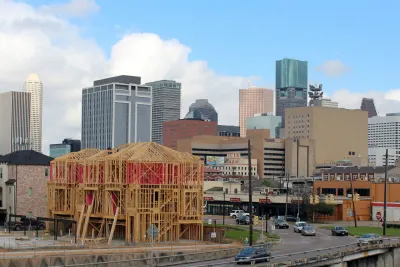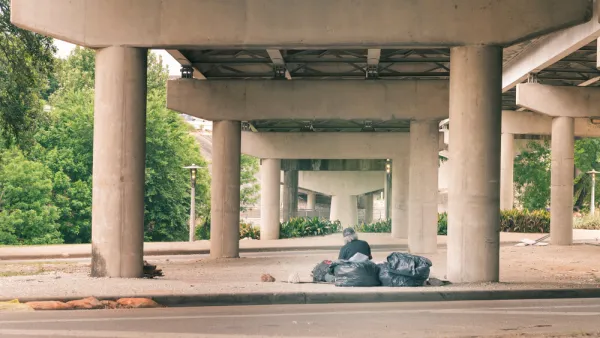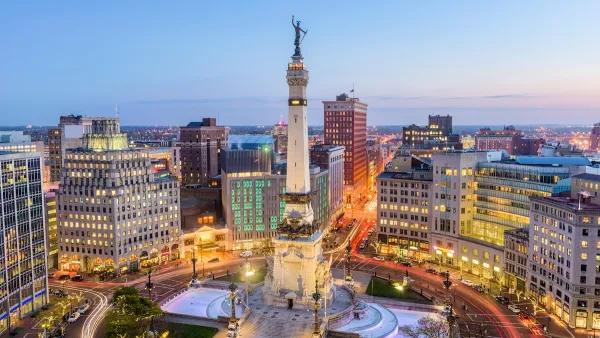While the numbers of unhoused people in other major U.S. cities grow, Houston has managed to effectively end veteran homelessness and house more than 26,000 people since implementing a ‘Housing First’ approach a decade ago.

What is driving Houston’s unparalleled success among big U.S. cities at reducing the number of people experiencing homelessness? As Danielle McLean explains for Smart Cities Dive, “The greater Houston area saw a 53% decrease in its homeless population between 2011 and 2020. During that time, the homeless population in the city and county of Los Angeles grew by 84%, New York City by 52%, and Dallas by 26%.”
McLean adds that “Since 2012, the Houston model has housed over 26,000 people, with 90% of them remaining housed for two or more years, according to Eichenbaum.” By 2015, the city ‘effectively ended’ homelessness among military veterans.
According to McLean, “Houston worked with surrounding county governments, various community stakeholders and nonprofit service providers to develop a model that, despite operating with a small budget, has decreased the area’s homeless population by roughly 63% since 2011, according to a recent city report.”
Houston’s success is attributed to three main factors:
- Housing First: “The city employs a housing-first model that prioritizes providing permanent housing to people experiencing homelessness as quickly as possible with no barriers to entry. The city then provides wraparound support services to ensure they remain housed.”
- A regional continuum of care that puts all organizations and agencies providing services to unhoused people under one umbrella.
- Data-driven decisionmaking that relies on proven data to allocate resources and decide on what projects and initiatives to support.
“But, according to Ann Oliva, CEO of the National Alliance to End Homelessness, success in other cities will depend on communitywide buy-in.” In Houston, widespread support from local officials and stakeholders have been an important aspect of the city’s success.
FULL STORY: How Houston’s homeless strategy became a model for other U.S. cities

National Parks Layoffs Will Cause Communities to Lose Billions
Thousands of essential park workers were laid off this week, just before the busy spring break season.

Retro-silient?: America’s First “Eco-burb,” The Woodlands Turns 50
A master-planned community north of Houston offers lessons on green infrastructure and resilient design, but falls short of its founder’s lofty affordability and walkability goals.

Delivering for America Plan Will Downgrade Mail Service in at Least 49.5 Percent of Zip Codes
Republican and Democrat lawmakers criticize the plan for its disproportionate negative impact on rural communities.

Test News Post 1
This is a summary

Test News Headline 46
Test for the image on the front page.

Balancing Bombs and Butterflies: How the National Guard Protects a Rare Species
The National Guard at Fort Indiantown Gap uses GIS technology and land management strategies to balance military training with conservation efforts, ensuring the survival of the rare eastern regal fritillary butterfly.
Urban Design for Planners 1: Software Tools
This six-course series explores essential urban design concepts using open source software and equips planners with the tools they need to participate fully in the urban design process.
Planning for Universal Design
Learn the tools for implementing Universal Design in planning regulations.
EMC Planning Group, Inc.
Planetizen
Planetizen
Mpact (formerly Rail~Volution)
Great Falls Development Authority, Inc.
HUDs Office of Policy Development and Research
NYU Wagner Graduate School of Public Service





























